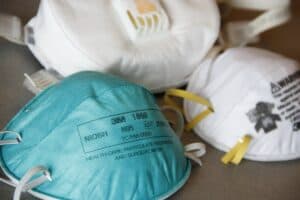Questions? Get a Quick Response
Questions? Get a Quick Response

With the rise of the omicron variant, many States and businesses are enforcing mask mandates.
Whether or not you agree with these mandates, the real question is…do they make sense when many masks are ineffective?
Based on our experience, we think not.
Cloth masks do little or nothing to protect the wearer from infectious aerosols, and mandating wearing these makes no sense.
Even surgical masks that do a pretty good job of protecting everyone else from the wearer aren’t 100% effective. Fluid mechanics tells us that any fluid (like air) will flow through the path of least resistance, and since surgical masks do not actually seal to the face, most of the incoming air enters around the mask rather than through it.
What does make sense instead of issuing a mask mandate, is requiring that well-fitted N95 masks be made available, especially for medical and emergency-response personnel. And the key phrase here is “well-fitted” which means that the N95 respirator (brand, model, and size) must be fit-tested!
A user could be wearing the best-filtering N95 in existence, but if the respirator doesn’t fit, it’s effectively useless, allowing more air around than through the mask. Even worse than providing little to no protection, the ill-fitting mask gives the wearer a false sense of security, potentially leading them to take risks they might never have if they’d known their respiratory system was unprotected.
There are two types of fit testing available when it comes to most respirators – qualitative and quantitative.
Qualitative fit tests rely on a test subject’s ability to sense a challenge agent (usually saccharine) while wearing their mask. But unfortunately, this produces absolutely no defensible metric that can be referred to for proof of effectiveness of fit. This type of testing is completely subjective and therefore can lead to a questionable result as far as the actual fit of the respirator is concerned.
Quantitative Fit Testing is completely objective, so the results can be relied upon to accurately measure whether or not the N95 (or other respirator) actually fits the person on whom it is being tested. Once the fit test shows a passing score, the healthcare worker or emergency response worker can take comfort in knowing they are truly protected.
Mandate fit tests for at-risk personnel, not useless cloth masks.
To learn more about quantitative fit testing, check out our Quantitative Fit Testing Guide here.

Customer Service
info@accutec.com
(866) 393-2405 toll-free
Global Distribution & Service Center
201 S. Miami Ave
Cleves, OH 45002
Get the Latest News from AccuTec Right in Your Inbox.